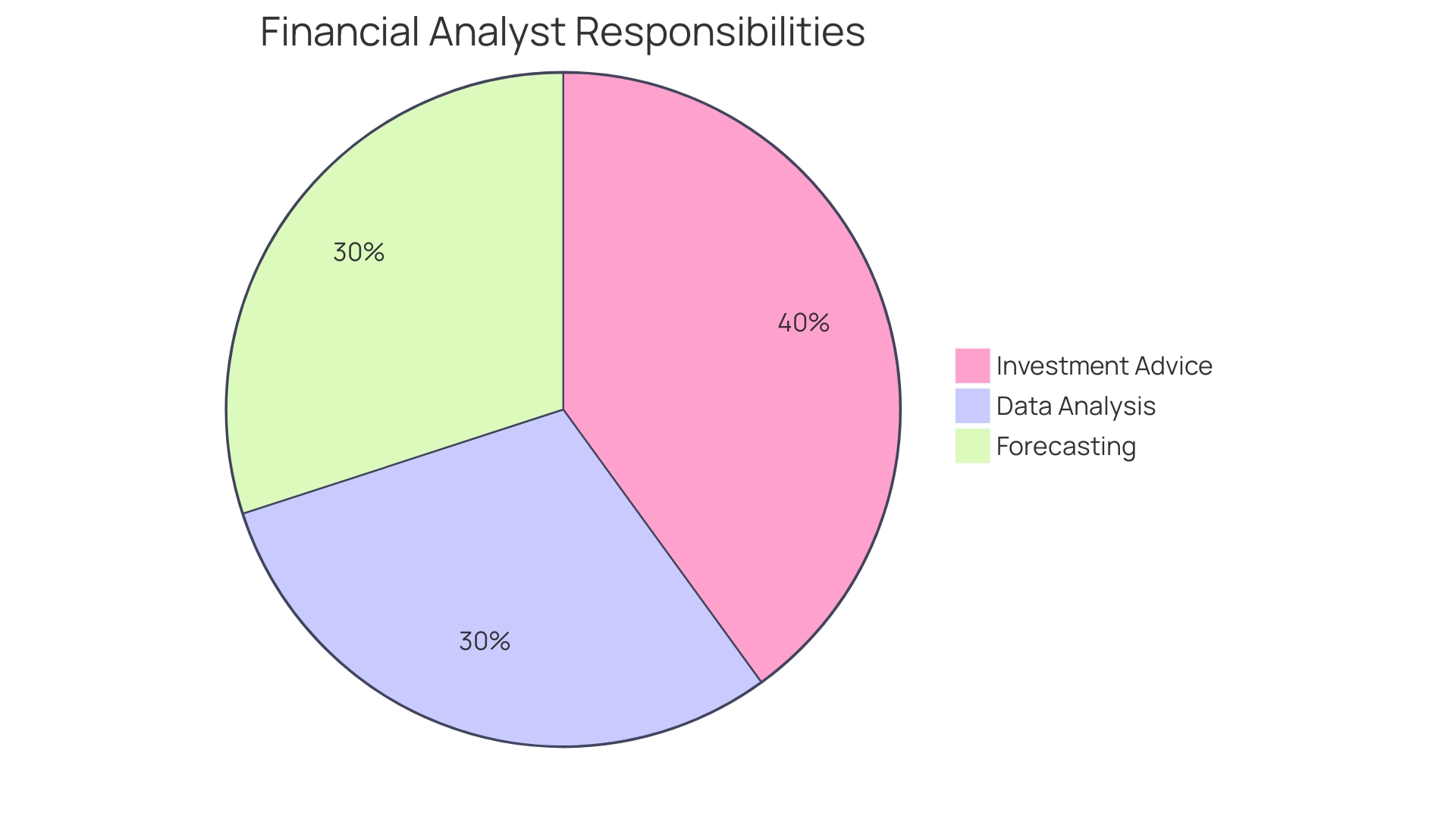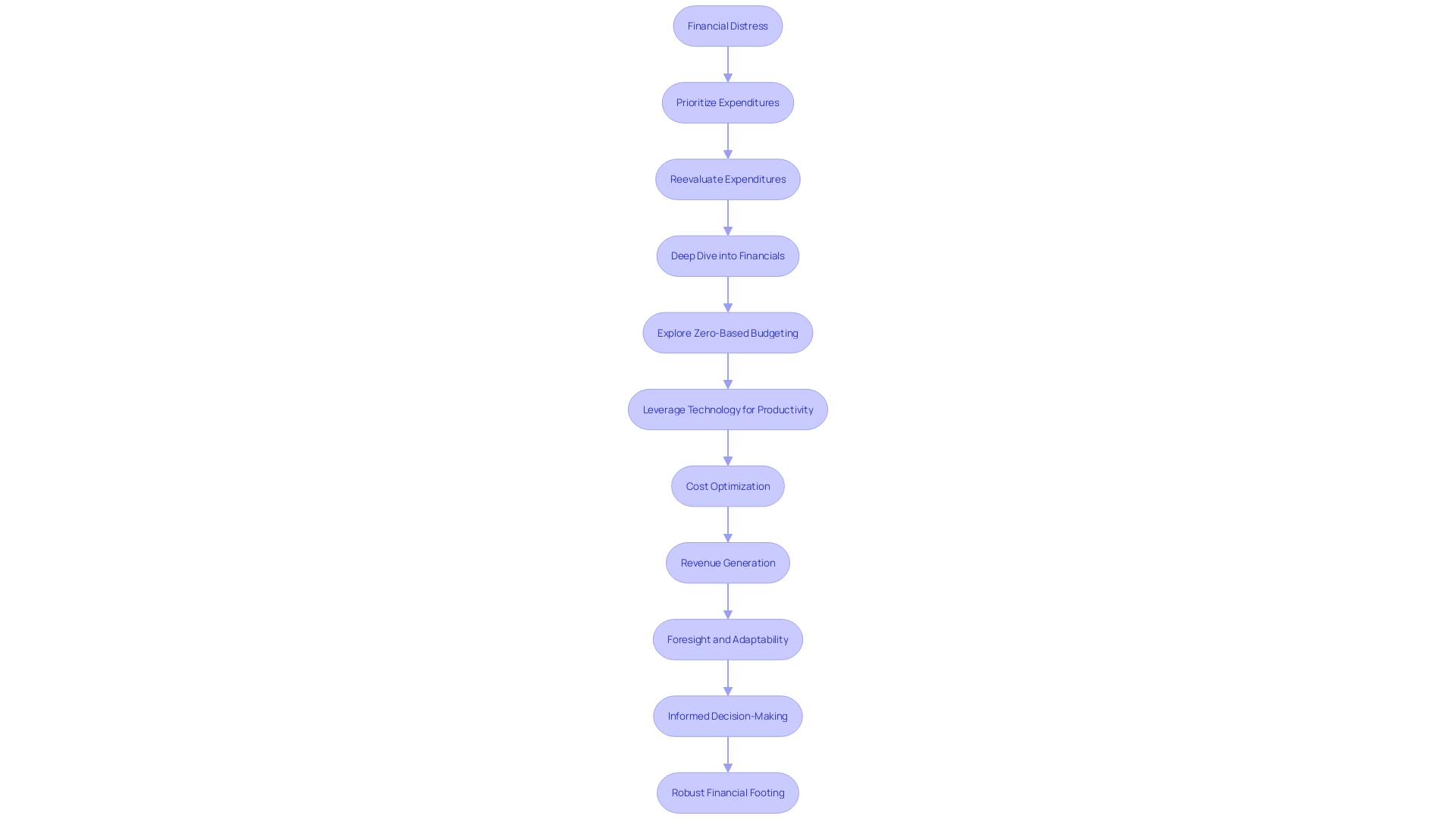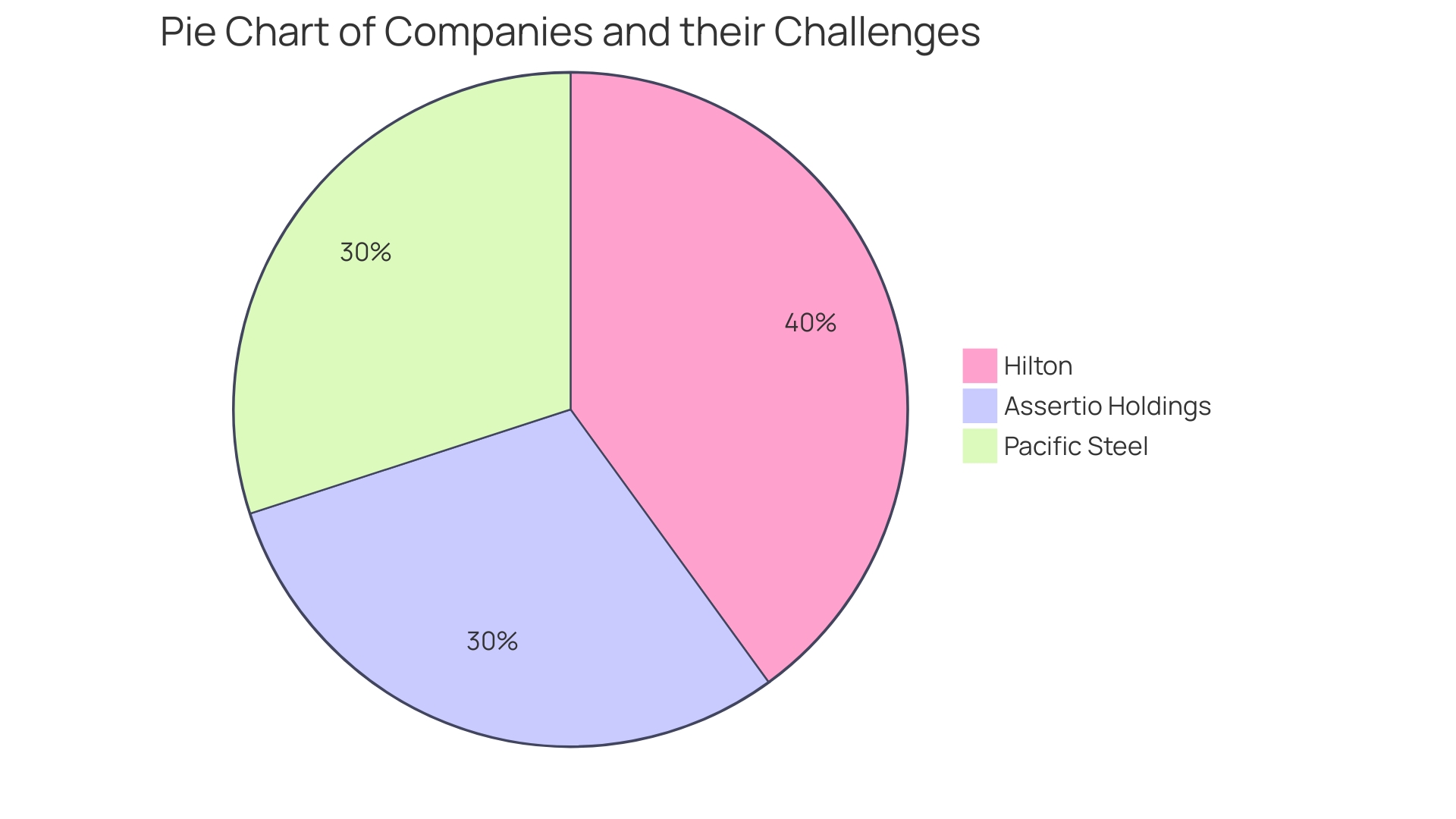Introduction
Financial distress, a pressing concern faced by businesses and individuals alike, arises when the ability to meet financial obligations becomes unattainable. It is characterized by cash flow shortages, mounting debts, and an impending inability to settle dues with creditors or vendors. Understanding the intricacies of financial distress is essential for identifying its root causes and devising strategies to navigate out of these challenging circumstances.
Examining financial reports, such as cash flow statements and statements of change in equity, provides valuable insights into a company's financial status, operational profitability, and overall financial health. By delving into these documents, stakeholders and investors can gain a comprehensive understanding of short-term and long-term obligations, net earnings, and the company's fiscal well-being. This article explores the definition of financial distress, the symptoms and causes, the impacts on stakeholders, and tailored solutions to overcome these challenges.
It also highlights real-world examples of companies that have successfully recovered from financial distress, emphasizing the importance of proactive financial management and strategic decision-making. As the number of company insolvencies continues to rise, it is evident that comprehensive financial analysis and proactive management are crucial for securing a firm's financial footing.
Definition and Meaning of Financial Distress
Financial distress emerges as a pressing concern when a business or individual faces the stark reality of being unable to fulfill financial commitments. This precarious condition manifests through a stark shortfall in cash flow, escalating debts, and an imminent incapacity to settle dues with creditors or vendors. Delving into the intricacies of financial distress is imperative for pinpointing the precipitating factors and crafting strategies to navigate out of these financial straits.
A company's financial reports, particularly the cash flow statement, provide a window into its monetary movements. This statement delineates all cash inflows, from operational revenues to infusions of external capital, and cash outflows, encompassing operational expenses and investment allocations. Analysis of the cash flow statement reveals whether a company's operations are sufficiently profitable or overly dependent on external funding. It also sheds light on cash management practices, offering a glimpse into the organization's financial vitality and operational prowess.
Further scrutiny is afforded by the statement of change in equity, which tracks alterations in a company's equity throughout a specified financial period. This report, frequently referred to as the statement of retained earnings, provides insights into decisions affecting shareholder equity, including the handling of net income and dividend distributions.
Exploring these financial documents is crucial as they convey the financial status of a company, guiding stakeholders and investors through the maze of short-term and long-term obligations, net earnings, and the company's fiscal well-being. These reports adhere to stringent standards such as the International Financial Reporting Standards and the Generally Accepted Accounting Principles, ensuring their accuracy and comprehensibility.
The significance of these factors is underlined by the statistics showing a concerning rise in company insolvencies, with the total number of insolvencies in 2023 hitting a peak unseen since 1993, and marking a 14% increase from the previous year. This underscores the importance of vigilant financial management and the need for expert consultation to steer clear of financial distress.
In essence, financial distress is not merely about the lack of funds; it's a confluence of several elements that necessitate a comprehensive financial analysis and proactive management to secure a firm's financial footing.
Identifying Symptoms of Financial Distress
Understanding the indicators of financial distress is crucial for taking timely action to prevent exacerbation of the situation. Observable markers such as a downward trend in profitability, mounting debt, and habitual payment defaults signal underlying issues. A shrinkage in sales or customer base, coupled with strained stakeholder relationships, further underscores the urgency to intervene.
Leveraging data to shed light on financial challenges within your organization allows for precise support strategies. Aggregated employee data analysis could reveal specific financial stressors, enabling the design of bespoke financial wellness programs. Initiatives might include offering comprehensive financial education and planning tools or personalized advice from certified financial planners. This approach not only aids employees at various life stages but also enhances overall job satisfaction and productivity.
In today's economic climate, marked by persistent inflation and recession fears, financial anxiety is prevalent, affecting employees' mental, social, and physical health. A staggering 92% of employees experience financial stress, often due to limited financial literacy, excessive debt, and scant emergency savings.
To combat these pressures, consider debt consolidation as a means to manage high-interest obligations, such as credit card debt. By consolidating into a single loan with a potentially lower interest rate, repayment can become more manageable over a set term.
Additionally, reviewing your business's financial health through analysis of income statements, balance sheets, and cash flow is imperative. This exercise provides clarity on revenue trends, profitability, and investment outcomes, which are essential for informed financial decision-making.
Finally, remember that financial instability can also be a consequence of external factors, such as financial abuse. Providing resources to support those recovering from such circumstances can be an integral part of a comprehensive financial wellness strategy.

Exploring Causes of Financial Distress
Navigating the turbulent waters of financial distress requires a deep understanding of its myriad causes. On the internal front, companies might grapple with issues such as suboptimal financial management, cash flow complications, burdensome debt levels, inefficient cost containment, or asset mismanagement. Externally, they might be buffeted by economic recessions, sector-wide upheavals, shifts in market trends, or unforeseen calamities like natural disasters. These factors not only strain the immediate financial health of a company but can also derail its long-term strategic goals.
The stark reality is that financial instability is not an isolated phenomenon. Recent research underscores that American families frequently encounter financial upheavals—be it an unforeseen medical expense, income disruption, or other monetary shocks. The complexity of accessing support services, coupled with onerous application processes, often leads to missed opportunities for aid. Data reveals that over a quarter of eligible individuals do not receive any assistance from federal programs, with an estimated $60 billion in benefits going unclaimed annually across five key programs.
Moreover, for those who do secure benefits, the process can consume valuable time and resources. Take the case of Jordan, whose hours were cut back at work. He faced the cumbersome task of applying for unemployment benefits and SNAP at locations across town, ultimately resorting to a costly payday loan to meet his immediate financial needs.
These real-world scenarios highlight the critical need for a collective reimagining of how to alleviate customer pain points. There is a growing call to action for states and local governments to utilize federal funds more effectively, helping people swiftly regain financial stability. Moreover, as we transition out of the national Public Health Emergency, initiatives like the rapid response for Medicaid renewals have been pivotal in supporting millions across various states.
It's not just individuals who are affected; businesses to face the daunting prospect of insolvency when their liabilities outweigh their assets. An insolvency can stem from various triggers, such as poor execution of business mergers or acquisitions that fail to create expected value. The need for a systematic approach to change management, which includes listening to team members and customers, cannot be overstated. This structured process can significantly improve the execution of business adjustments, ensuring a more resilient path forward.
In a landscape where the highest number of company insolvencies since 1993 was recorded in the previous year, it is clear that both individuals and businesses must be equipped with the right tools and support systems to navigate financial crises and embrace stability.

Impacts of Financial Distress on Stakeholders
Financial distress doesn't unfold in isolation; its repercussions ripple through every layer of an organization, affecting all stakeholders involved. Investors watch nervously as the value of their shares dwindles. Employees grapple with the anxiety of job security and the potential erosion of their benefits. The domino effect continues as suppliers face the brunt of delayed payments or the prospect of invoices remaining unpaid, challenging their own financial stability. At the customer front, trust in the company's capacity to deliver wanes, which can deal a long-term blow to the business's reputation and market position.
This intricate web of interdependencies was starkly evident in the healthcare sector, where financial instability can lead to service disruptions and even closures. Such scenarios aren't just about the bottom line; they involve complex decision-making, often influenced by a multitude of actors including financial stakeholders. Their influence becomes particularly pronounced during times of financial hardship, shaping the future of service delivery.
The story of Métro Media in Montreal underscores the severity of financial distress, where a once-thriving local news pillar succumbed to budget constraints, leading to its eventual bankruptcy. This serves as a stark reminder of the real-world impacts when financial stability is compromised.
Moreover, understanding the nuances of financial distress extends beyond the immediate economic implications. It requires a constructivist approach that recognizes the social and political dimensions of the decisions made in the face of such challenges. As noted in the literature, the closure of healthcare organizations is a profound service change, replete with resistance from various quarters, including medical professionals and the public, who often take to media to shape the narrative.
In the throes of financial distress, effective recovery strategies go beyond mere financial restructuring; they necessitate a comprehensive engagement with all stakeholders. It's about forging alliances and crafting a narrative that resonates with concerned parties, all while maintaining a keen eye on long-term value maximization. This is echoed by experts who emphasize the importance of knowing the numbers and having a robust plan for navigating financial uncertainty.
As we consider the highest number of company insolvencies since 1993, with a 14% rise from the previous year, the urgency for proactive financial management becomes clear. It's not just about weathering the storm, but about setting a course for sustainable growth that takes into account the complex ecosystem of stakeholders who are all part of the business journey.
Tailoring Solutions to Unique Financial Challenges
Navigating financial distress necessitates a strategic and customized approach, as no two situations are identical. To regain stability, one must prioritize and reevaluate all expenditures, aligning them with future objectives. This crucial first step involves a deep dive into the financials, weighing both outflows and inflows. Innovative thinking is also key. For instance, YNAB's zero-based budgeting system empowers users with a proactive spending framework, ensuring every dollar is assigned with intent, fostering intentional spending, savings, and generosity. Meanwhile, Sirius Technologies' deployment of Strong Network's platform for secure Cloud Development Environments showcases the power of strategic technological adaptation in enhancing productivity and global collaboration. Similarly, companies must explore all avenues, from cost optimization to harnessing new revenue streams, to restructuring debt and renegotiating contracts. The ultimate goal is a robust financial footing, achieved through a blend of foresight, adaptability, and informed decision-making.

Recovery Prospects for Viable Companies
While confronting financial distress, it's essential to recognize that with the right strategies, businesses can rebound and prosper. Streamlining operations, enhancing product diversity, managing cash flow more effectively, solidifying stakeholder relationships, and embracing innovative practices are key steps in driving a successful turnaround. The food and beverage industry, notably resilient during economic downturns, exemplifies the potential for growth even amidst challenging times, with the industry boasting sales of over $6.22 trillion between 1992 and 2019.
A robust financial strategy encompasses a comprehensive budget that meticulously tracks income, expenses, and anticipates future costs, enabling businesses to allocate resources wisely. As Bain research suggests, a mere handful of companies founded in the past two decades have reached unicorn status while being cash-positive, indicating the importance of self-sufficiency over mere market valuation. Alina Fisch, a chartered financial analyst, underscores the empowerment that comes from mastering cash flow management.
In today's competitive landscape, where venture capital isn't as readily accessible, startups are urged to adapt rapidly or risk being left behind. This sentiment is captured in the observation that many companies are not moving fast enough to adjust to the post-2021 financial climate. The stark reality is reflected in the 25,158 company insolvencies reported in 2023, the highest since 1993 and a 14% increase from 2022. Businesses must now pivot towards strategies that prioritize financial independence and operational efficiency to navigate the ever-evolving market dynamics.

Real-World Examples of Financial Distress and Recovery
Analyzing the trajectories of companies that have dealt with financial distress reveals a wealth of strategic insights. A notable report published in August 2023 showcased the dramatic turnaround of companies post-resolution, with an impressive 76% average increase in sales within three years. This success wasn't solely due to market trends; it was also a testament to the efficacy of improved management. These entities not only achieved operational break-even but also exhibited a 50% boost in assets and employee expenses, suggesting a robust recovery that extended to greater employment opportunities.
The case of Van's Aircraft, overseen by Judge David W. Hercher in the U.S. Bankruptcy Court for the District of Oregon, is a compelling example of strategic reorganization. With the majority of creditors, including customers and vendors, voting in favor of the proposed plan, the company demonstrated that consensus and equitable terms could lead to a successful restructuring. The customer's request to amend the repayment terms, although understandable, was outvoted by 88% approval from the creditor class, highlighting the delicate balance between individual concerns and collective agreement in financial recovery scenarios.
In the realm of financial stability, it's crucial to recognize the signs of a market downturn and understand how to navigate them. Market crashes, defined by a drop of at least 10% in a single trading day, can be unpredictable, but monitoring vulnerabilities within the financial system can provide foresight. By focusing on valuation pressures and the willingness of investors to take on risk, businesses can gauge potential pitfalls and mitigate them effectively.
Lastly, the evolving definition of a 'unicorn' in the business world underscores the rarity of companies that not only reach a $1 billion valuation but also sustain themselves without continuous venture capital support. As Bain research indicates, while there are nearly 2,500 such companies founded in the last two decades, very few have the operational cash flow at scale to maintain their status independently. This rarity points to the critical importance of not just growth but also self-reliance and financial resilience in the long-term success of a business.

Conclusion
Financial distress is a pressing concern that arises when businesses and individuals struggle to meet financial obligations. Understanding its causes and devising strategies to overcome it is crucial.
Analyzing financial reports like cash flow statements and statements of change in equity provides valuable insights into a company's financial health. These reports reveal short-term and long-term obligations, net earnings, and overall fiscal well-being.
Identifying symptoms of financial distress allows for timely action. Observable markers like declining profitability, mounting debt, and payment defaults signal underlying issues. Leveraging data enables tailored support strategies such as financial education programs and personalized advice.
Navigating financial distress requires understanding internal and external causes. Suboptimal financial management, cash flow complications, debt levels, and inefficient cost containment contribute to instability. External factors like economic recessions and market trends also pose challenges.
A systematic approach to change management is crucial for resilience.
Financial distress affects stakeholders including investors, employees, suppliers, and customers. Building trust and engaging stakeholders is essential for effective recovery. Tailoring solutions involves prioritizing expenses, exploring cost optimization and new revenue streams, and restructuring debt.
Successful recovery is possible through streamlined operations, diverse products, effective cash flow management, strong stakeholder relationships, and innovation. Analyzing companies that have overcome financial distress provides strategic insights.
As company insolvencies rise, comprehensive financial analysis and proactive management are crucial for securing a firm's financial footing. By confidently addressing financial distress, CFOs can navigate challenges and set their companies on a path toward sustainable growth.




